Quetzal: The Avatar of the Aztec Quetzalcoatl does exist. The bird was able to resemble a feathered serpent (9 photos)
— Will you be a symbol of our state, Guatemala?
- You talking to me?! How dare you, insignificant mortal, turn to your god, the lord of the air and the lord of the wind?!
— We pay a glass of berries a day.
- Deal!
Greetings dear subscribers, today we will talk not just about the royal, but the divine bird. Meet the quezal on stage! 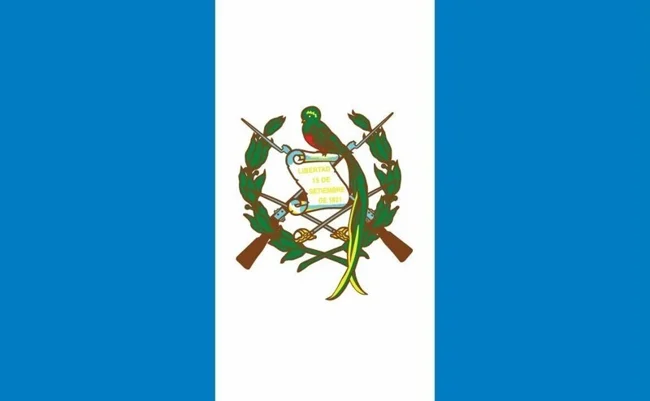
He sits on the constitution next to the rifles - a place of honor!
However, his origins are in complete order. Quezals, or quetzals, separated from the evolutionary tree of birds 56 million years ago and are part of a small but very proud order of trogons. All members of the order prefer warmer places, but Quezal decided to dry his feathers in Central America: from the south of Mexico and almost to the Panama Canal. 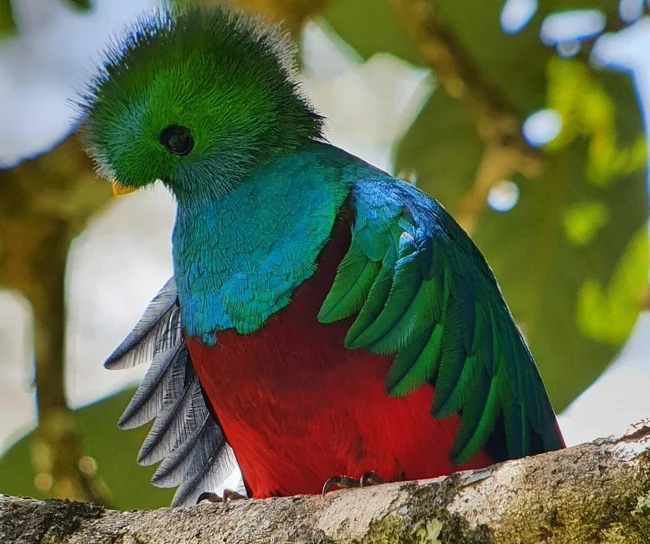
They shared territory with the Mayans and Aztecs, great admirers of Quetzalcoatl: the god of air and fertility, patron of the freedom-loving and merciful. Well, people took the quetzal as the living embodiment of their ruler. As befits the avatar of the lord of the winds, our hero is a high-flying bird. In the literal sense, because it lives at altitudes closer to 3 km, although during the rainy season it descends to a kilometer. 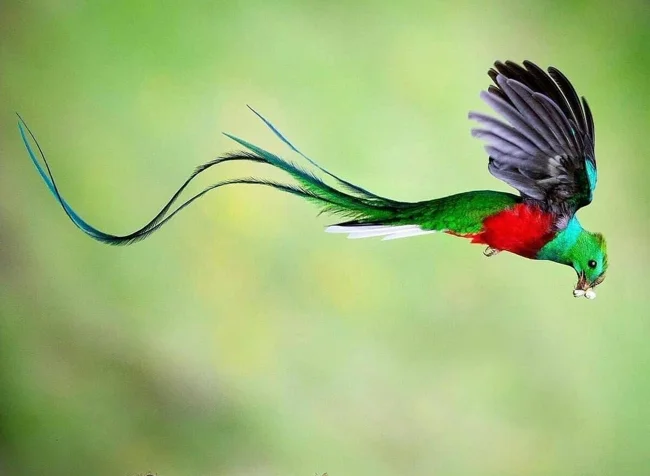
The literal translation of the name of God is feathered serpent. There really is something snake-like about quezal.
The deity's conceit may be inflated, but it does not match his size: the length from tip to tip of 35 cm brings back memories of pigeons and certainly does not inspire respect. But what plumage! The back and wings shimmer with green, turquoise and blue colors, and the abdomen is painted a flashy red. There is some sexual dimorphism: boys are brighter than girls and have paired feathers protruding from their tail as long as the entire bird. 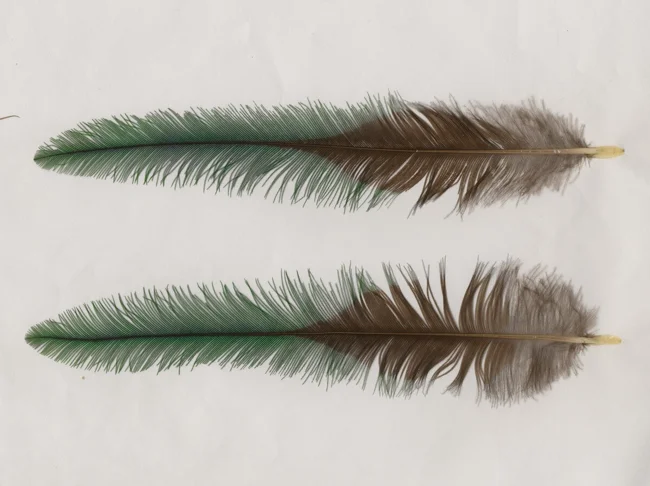
I wouldn’t refuse such feathers!
The Aztecs revered these feathers and decorated them with royal and ceremonial headdresses. Surprisingly, the Indians did not destroy the population of colored birds with their strange fetish. People of the past caught these birds, carefully plucked out their feathers, and then released them into the wild. This is someone from whom I did not expect lessons in humanity and compassion! 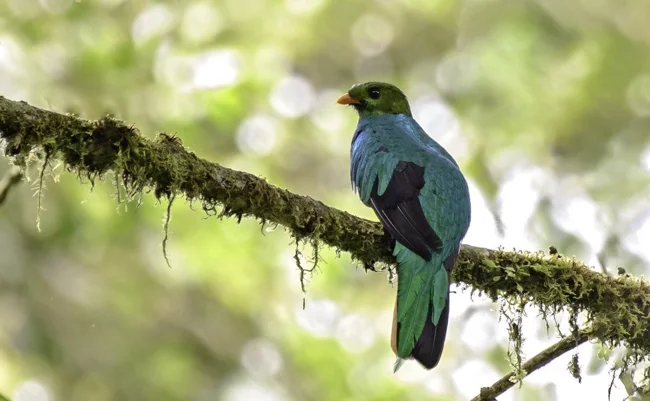
The quezal's diet consists almost entirely of the fruits of ocotea, a fairly common tropical tree. Only now modern people are organizing total deforestation, and the personification of the supreme being has to dilute the vegetarian preferences with insects, tree frogs, lizards and snails. His way of hunting is blissful idleness next to a fruitful branch or waiting for a random victim. 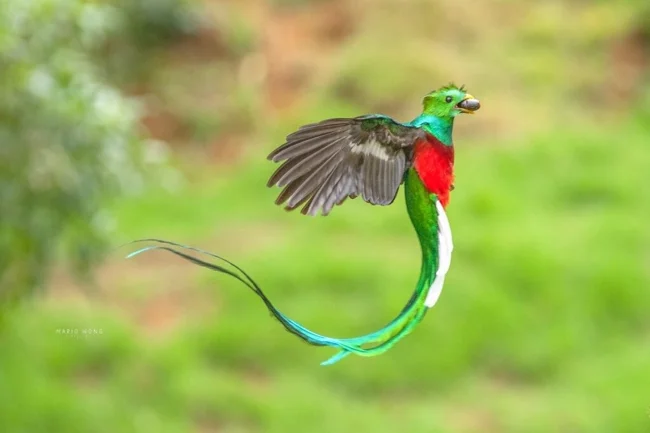
As in the legends, when a god is not idle, he either feasts or reproduces. Gods are attracted to goddesses from March to June, which coincides with the monsoon season. During this time and until the yellowthroat rises onto the wing, the pair stays together. They make nests in abandoned tree hollows. The female lays 2-4 blue eggs, on which both parents take turns sitting.
In the case of a male, this is as convenient as it is for human men to cross their legs - male sexual characteristics get in the way (I'm talking about feathers!). After 17-19 days, young gods appear to the world, who will conjure their plumage after another 20 days, and will be able to create their own mini-gods only by their third birthday. 
Against the background of such low rates of reproduction, the decline in the number of birds becomes especially noticeable. After the defeat of the Aztec empire, a hunt began for them, which brought the species to a page in the Red Book. Even the title of the national symbol of freedom of Guatemala, a place on the country’s flag and a complete ban on hunting did not save them. 
No breeding program for these birds has been successful: they do not live in captivity for more than a couple of months, even under ideal conditions. Local residents are sure that, deprived of freedom, this divine animal dies of a broken heart. 
What does this emerald bird teach us? Because everything has its price. For incredible beauty you have to pay with persecution, and for the love of freedom - with life.
